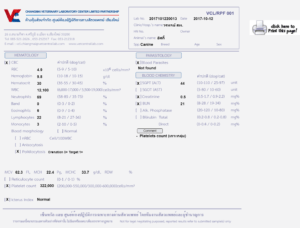
Do dogs get fevers?

Dogs are entitled to be lazy every once in awhile, and their appetites can decrease for various reasons. Check this out for some really serous stuff about why dogs loose apitite. Usually these spells are brief, but when these common symptoms are present along with others like vomiting, nasal discharge, shivering or a fast heartbeat, these may be warning signs of pyrexia, or a dog fever.
https://www.youtube.com/watch?v=hp1OY5s2fu0
Whether you’ve been a lifelong dog owner or just recently gotten your first rescue dog or puppy, so many questions run through your mind as you try to get to the source and seriousness of your dog’s discomfort, and treat it. Here are some answers to those questions:
How to tell if your dog has a fever (fever symptoms and signs) – Check the nose!
Since every dog and breed are unique, understanding your dog’s personality and sensitivities are key to determining whether he has a fever. There are some common symptoms to look for: a lack of energy, loss of appetite, shivers, runny nose, coughing or vomiting, dizziness, or an unusual depressed or irritable mood. If you groom your dog regularly then you will easily notice these variations from standard “happy puppy behaviour” (Another critical reason why we spend at least 5 minutes a day massaging / grooming pups). If you want to get more serious about grooming then here is a guide to pain free and struggle grooming with clippers.

If your dog has a nasal discharge, this could also signal a fever. A widespread home method for detecting fever in dogs is to check your dog’s nose. If it is warm and very dry, it might indicate a fever.
What is a dog’s normal temperature?
What is a puppy’s normal temperature range?
What is a dog’s temperature when they are in labor?
How to take your dog’s temperature at home and at the vet
There are special rectal thermometers for dogs that take less than 60 seconds to register a temperature reading, and they are very easy to use. With a dab of petroleum jelly or baby oil, gently insert the rectal thermometer only about an inch deep.

Your vet may also have a special ear thermometer as an alternative to taking your dog’s temperature.
How can you tell if your dog has a fever without a thermometer?
If you are in a situation where you have no thermometer and need to determine if your dog has a fever, there are places on a dog’s body that you can feel for changes.
These spots have many little blood vessels which feel very warm during a fever when an infection is underway. If one ear is warmer than the other, this might be a clue that your dog has an ear infection. Additionally, you can feel your dog’s armpits and groin for swollen lymph nodes and excessive warmth.
You will want to practice feeling these areas with your dog so that you can get an idea of his own temperature and regular changes in temperature on his nose. Although it will be very approximate and by sense, you will have an idea of how to take your dog’s temperature without a thermometer if the need arises.

How to take a dog’s temperature with a human thermometer
You may want an extra person to help you take your dog’s temperature.
Dog fever home remedy – how to treat dog fever at home
The American Kennel Club helping cool your dog down by applying cool damp cloths or water to his paws and ears, and getting him to drink a little cool water if possible.
Causes of fever
It is hard to know initially what can cause a fever in your dog. There is a spectrum of possibilities, from infection to specific diseases which are transmitted to your dog through insects or soil, depending on where you live.
The most common cause of dog fever is an infection, whether it be from a wound of some sort or an internal bacterial or viral illness. An abscessed tooth can also cause a fever.

Vaccinations can often cause fevers, as well as allergic responses which are unique to your dog.
Excessive heat is likely to cause a fever in dogs, and you must react quickly in order to prevent heat stroke. Move your dog immediately to a shaded or internal location and apply cool cloths or ice to his body, particularly around the paws and ears.
The consumption of toxins by your dog will also trigger a fever. These include plants, human prescription or over-the-counter drugs, certain foods like xylitol (used in sugarless gum) and chemicals like antifreeze.
Causes of high fever — is it dangerous for my dog?
When your dog’s fever becomes very high, there are more serious reasons

If common reasons are ruled out, your vet will want to do a physical exam to explore the possibility of parasitic, metabolic or endocrine diseases, which may include a complete blood count test, measuring hematocrit, RBC and hemoglobin. The ratio of red blood cells to white can reveal anemia brought on by these diseases.
There are a number of parasitic canine diseases that will induce a fever in your dog. Let’s look at a few of them:
Dog fever with lethargy and no appetite
There are some serious and contagious infections which are signaled by fever, lethargy and no appetite, but the good news is that they can be treated with antibiotics and other medications. Parvo virus, spread through feces, causes abdominal pain and vomiting. Distemper, which causes neurological problems, can also be treated. Kennel cough causes respiratory distress but can also be treated.

The parasitic heartworm, transmitted by mosquitoes, requires a long regime of injections and long rest. Heartworm can be prevented with monthly medications.
Tick diseases in dogs
Ticks are carriers of a number of debilitating diseases in dogs.
What is tick fever in dogs? What is the treatment for tick fever?
The Lone Star tick and brown dog tick are the most prevalent carriers. While monthly tick control products are your best prevention against ticks, it is always best to know what to do in the event your dog is bitten. Your ability to sense changes in your dog’s behavior and body temperature and detect a fever is key to wiping out the infection before it may get worse.
Tick fever progresses in three stages, according to Cuteness.com. In the early days after your dog is bitten, you will notice symptoms in your dog like swollen lymph nodes and loss of appetite accompanied by fever.
Your vet may prescribe antibiotics as a precaution. Catching tick fever early gives your dog much better insurance against severe complications later on. If you know your dog was bitten, you need to make note of the date so that a blood test can be done in the eighth week following the bite.
In the second stage of tick fever, your dog will fight the infection while showing no symptoms at all. A dog with a healthy immune system will fight the tick fever on his own during this phase.
At the third stage of the infection, your dog will have either conquered the tick fever, or he will show more severe signs of illness: bleeding problems, anemia, trouble seeing, and difficulty walking.
It is not until this stage, if not yet treated, that a vet will do a blood test as it takes time for your dog to build up antibodies that can be tested. Antibiotics and sometimes fluids and transfusions are treatment options.

Canine Valley fever / Valley Fever in dogs / treatment/ dog Valley Fever treatment cost
If you live in the Southwest US, you will want to be aware of a less common but serious fever, Canine Valley Fever, brought about through a fungus released in the soil by rodents and natural weather events.
Dogs are susceptible if they do a lot of digging and playing in dirt. The fungus is inhaled and causes fever in dogs, accompanied by respiratory and neurological discomfort and distress.
Rocky Mountain Spotted Fever in dogs /symptoms of Rocky Mountain Spotted Fever in dogs
Like other tick illnesses in dogs, Rocky Mountain Spotted fever is a Rickettsia bacterial infection carried by ticks. No obvious symptoms other than the bite are present the first day. Anywhere from two to fourteen days after a bite, however, an infected dog will suffer fever, digestive distress, bleeding, and an array of neurological symptoms such as dizziness.
Milk Fever in dogs
Yet another fever in dogs which is accompanied by loss of energy and appetite is “milk fever,” or eclampsia. This occurs when pregnant or lactating dogs reach an unusually low level of calcium in their blood. A logical remedy would be to change your dog’s diet but this can actually further decrease the calcium levels, according to the website All-About-Goldens.
Milk fever symptoms are easy to spot, and they get worse very quickly. You will notice nervousness in your dog, shivers and difficulty walking. Your vet will immediately need to give her a high-calcium intravenous solution.

Know the signs of dog fever
When in doubt, look for the signs of high temperature and discomfort, take a thermometer reading, and call your vet if you determine your dog has a fever.
Remember to tell your vet all the places your dog has been (Pro Tip: If you are worried about infection Use a Satellite or GPS dog fence to restrict their movements to safe areas. ) and all the symptoms he is having so that relief and treatment of the cause of the fever can happen as quickly as possible.
Know how to reduce a fever in your dog at the onset. In the case of dog fever, it’s better not to “let sleeping dogs lie”.
![10 Best Dog Crates for Separation Anxiety [High anxiety dog crates 2019 Reviews] 10 Best Dog Crates for Separation Anxiety [High anxiety dog crates 2019 Reviews]](https://shihtzuexpert.com/wp-content/uploads/2019/05/5-3.jpg)

![6 Best Dog Treadmills for 2023 [Buyer’s Guide] 6 Best Dog Treadmills for 2023 [Buyer’s Guide]](https://shihtzuexpert.com/wp-content/uploads/2019/04/Best-Dog-Treadmills-1.png)

